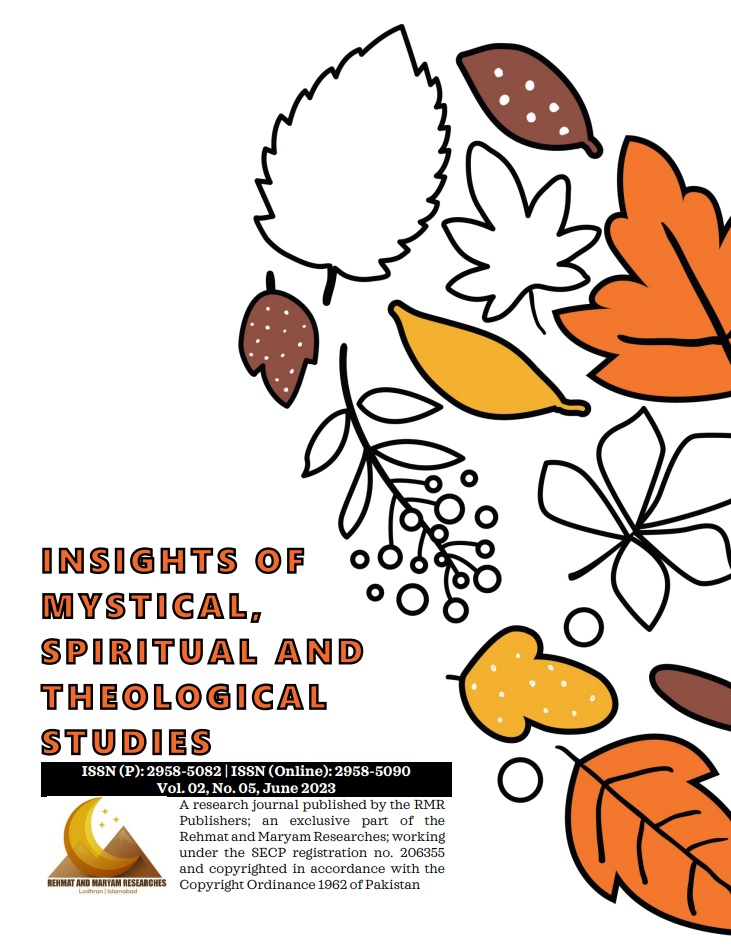Unraveling the Mysteries of Hurufism: A Study of its Evolution, Philosophical Underpinnings, and Contemporary Practices
Keywords:
Fazlallah Astarabadi, Shah Ni'matullah wali, Sultan walad, Dawlatshah Samarqandi, Tarih-i-HurufiyyaAbstract
Hurufism is a mystical and numerological tradition that emerged in Iran in the 14th century, which centers around the belief that letters and numbers hold spiritual significance and can be used to unlock hidden meanings in religious texts. Over the centuries, Hurufism has become a part of the cultural and spiritual fabric of Iranian society, with many Iranians incorporating its teachings into their religious and spiritual practices. In modern times, Hurufism continues to be a topic of interest and study in Iran. Many modern scholars and Shia theologians have explored the teachings of Hurufism and incorporated its principles into their own work. In addition, Iranian universities have hosted conferences and workshops on Hurufism and related topics, providing a platform for scholars and experts to share their knowledge and insights.
Despite its long history and enduring influence in Iranian society, Hurufism remains a controversial and divisive topic. Some religious scholars and leaders view it as a deviant and heretical tradition, while others see it as a legitimate and valuable aspect of Islamic mysticism and spirituality. Nevertheless, the enduring popularity of Hurufism in Iran is a testament to its enduring spiritual and cultural significance in the country.
References
Anzali, A. (2017). Mysticism in Iran; The Safavid Roots of a Modern Concept. South Carolina: University of South Carolina Press.
Asim, D. m. (2023). The Study of Hurufism in Contemporary Iran: An Overview of Academic Research and Study. Islamabad: Pak-Iran Intellectuals Forum (Islamabad Office). Retrieved from https://pakiranintellectualsforum.wordpress.com/2023/05/16/the-study-of-hurufism-in-contemporary-iran-an-overview-of-academic-research-and-study/
Baldick, J. (1989). Mystical Islam; An Introduction to Sufism. New York: NYU Press.
Bashir, S. (2012). Fazlallah Astarabadi and the Hurufis. Minnesota: Oneworld Publications.
Farhad, A., & Asim, D. M. (2023). Exploring the Dual Impact of Hurufism on Iranian Society: Positive Contributions and Negative Consequences. Islamabad and Qom: Pak-Iran Intellectuals Forum (Islamabad and Qom).
Green, N. (2017). Afghanistan's Islam; From Conversion to the Taliban. University of California Press.
Kia, K. C. (2019). Art, Allegory and the Rise of Shi'ism in Iran, 1487-1565. Edinburgh: Edinburgh University Press.
Lewisohn, L., & Tabandeh, R. (2020). Sufis and Their Opponents in the Persianate World. California: UCI Jordan Center for Persian Studies.
Nurbakhsh, D. A. (2023). Our Order. Retrieved from Nimatullahi Sufi Order: https://www.nimatullahi.org/our-order/
Safi, O. (2023). SULTAN WALAD: In The Footsteps of Rumi and Shams. Retrieved from Fons Vitae: https://fonsvitae.com/product/sultan-walad-in-the-footsteps-of-rumi-and-shams/
Downloads
Published
How to Cite
Issue
Section
Categories
License
Copyright (c) 2023 Insights of Mystical, Spiritual and Theological Studies

This work is licensed under a Creative Commons Attribution-NonCommercial-NoDerivatives 4.0 International License.

